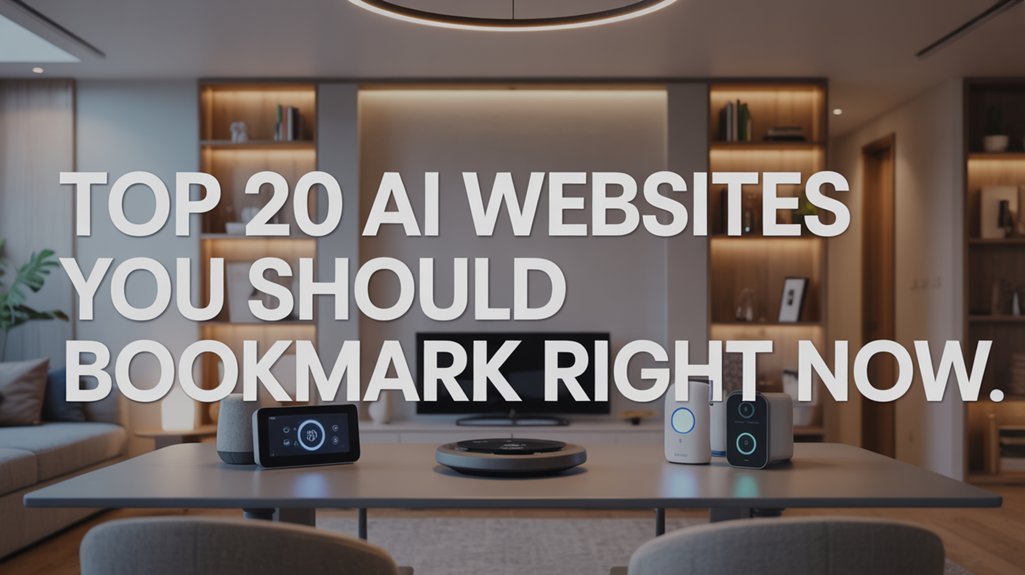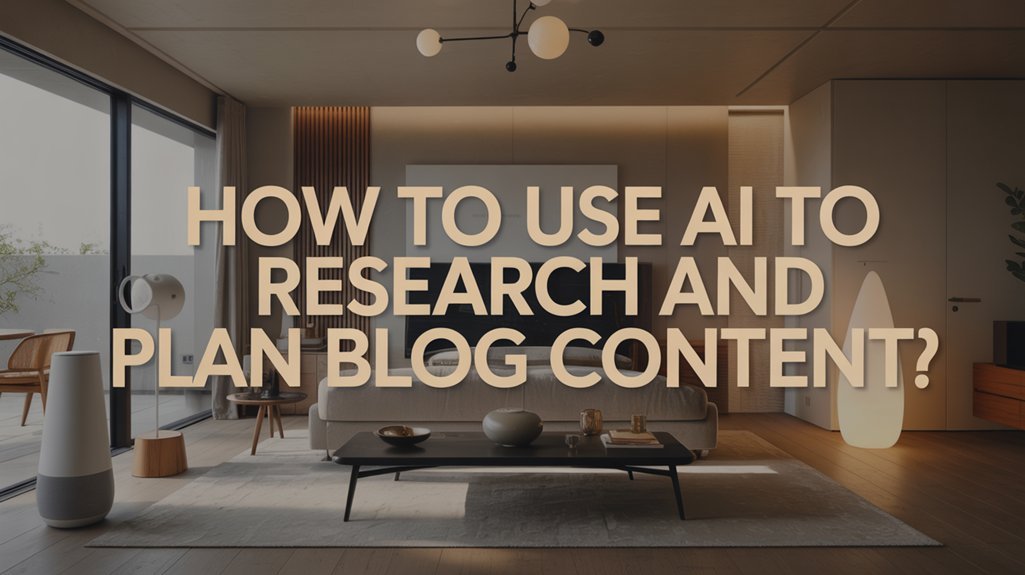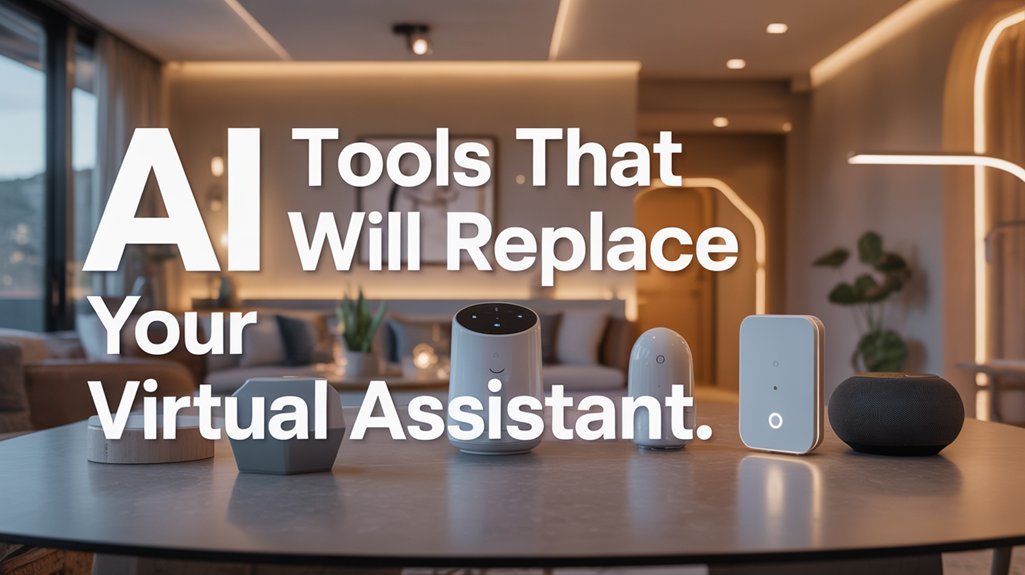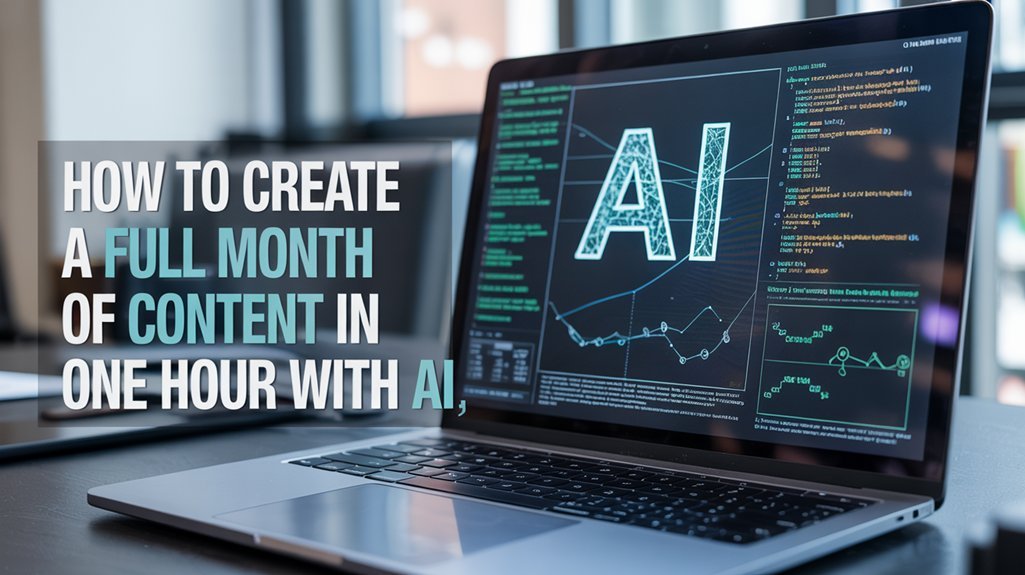To train a custom GPT for business, you'll start by defining your use case and gathering relevant domain-specific documents like API logs, support transcripts, and internal knowledge bases. Clean and structure this data, then configure custom instructions using hierarchical Markdown formatting with ALL CAPS for critical behavioral rules. Upload your knowledge documents, enable capabilities like web browsing or code interpreter, and design precise output schemas with validation layers. Test rigorously against real-world scenarios, deploy via API endpoints, and establish continuous monitoring with feedback loops to refine model performance. The following sections break down each implementation step with actionable technical frameworks.
Key Takeaways
- Define concrete business use cases with measurable objectives and conduct stakeholder needs assessments to identify automation opportunities.
- Aggregate and preprocess relevant business documents, removing duplicates and sensitive data while maintaining diversity and hierarchical structure.
- Configure custom instructions using Markdown formatting and ALL CAPS for critical rules to govern decision-making and output patterns.
- Enable advanced capabilities like web browsing and code interpreter while organizing knowledge documents into logical taxonomies for retrieval.
- Establish testing frameworks with edge case validation, deploy via API endpoints, and implement continuous monitoring with feedback loops.
Define Your Business Use Case and Objectives
Before you write a single line of training code or configure model parameters, you must architect your custom GPT around a concrete business use case.
Whether you're targeting customer support optimization, content creation pipelines, or data analysis workflows, specificity drives training efficiency.
Conduct a needs assessment with stakeholders to identify automation opportunities and quantify pain points.
Define your target user base—employees, customers, or both—as this determines response architecture and training data selection.
Your user base directly dictates model behavior—employee-facing GPTs require technical precision while customer-facing systems prioritize conversational accessibility and error tolerance.
Establish measurable objectives early: reduce customer support response times by 30%, increase content creation throughput by 50%, or automate 70% of routine queries.
These success metrics become your deployment benchmarks.
Document desired outcomes before training begins.
This creates your evaluation framework and prevents scope creep during development.
Your business use case isn't just context—it's the foundational specification that determines model architecture, fine-tuning parameters, and dataset curation strategies.
As AI transforms startups and drives innovation across industries, aligning your custom GPT with specific business outcomes ensures you remain competitive in an increasingly automated landscape.
Select and Prepare Your Training Data
You'll need to systematically identify and aggregate business documents—including API logs, customer support transcripts, internal wikis, and product documentation—that align with your defined use case.
Once collected, implement a data preprocessing pipeline that removes duplicates, filters out PII or sensitive information, and normalizes formatting inconsistencies across different source systems.
Structure your cleaned data into a consistent schema (JSON, JSONL, or CSV) with clear delineation between prompts and completions to enhance the fine-tuning process.
Identify Relevant Business Documents
The foundation of an effective custom GPT lies in curating a high-quality corpus of business documents that represent your organization's operational DNA. You'll need to aggregate diverse documents spanning business plans, marketing strategies, and customer feedback to construct a training dataset with sufficient contextual depth.
| Document Category | Priority Examples |
|---|---|
| Strategic Assets | Business plans, quarterly reports, competitive analyses |
| Operational Data | Process documentation, workflow diagrams, SOP manuals |
| Market Intelligence | Customer feedback, marketing strategies, sales metrics |
Guard proprietary information vigilantly. Implement data protection protocols before ingestion, sanitizing sensitive information that violates compliance frameworks. You must update dataset continuously—stale data degrades model performance. Your training corpus should encompass finance, operations, and human resources domains, creating multidimensional semantic understanding that powers strategic decision-making capabilities. Consider incorporating project management documentation to enhance your AI's ability to support project management with AI, enabling better resource allocation and timeline optimization.
Clean and Structure Data
Raw business documents arrive laden with inconsistencies, formatting artifacts, and noise that'll sabotage your model's performance before training begins.
Data Cleaning requires systematic removal of duplicates, corrupted entries, and irrelevant content from your training data. Alter unstructured text into structured datasets using schema-defined formats—JSON, CSV, or Parquet—enabling efficient processing pipelines.
Validate Data Relevance by filtering domain-specific content that drives contextually appropriate responses. Implement Annotation frameworks with labeled examples, entity tags, and intent classifications.
Balance Data Size against computational constraints: larger corpora improve capabilities, but architect your pipeline for scalability.
Ensure Data Diversity across document types—contracts, emails, reports, technical specifications. Structure hierarchically: categorize by function, tag metadata, preserve semantic relationships.
This architectural foundation directly impacts model performance, determining whether your custom GPT delivers precise business intelligence or generic outputs.
Configure Custom Instructions and Behavior Rules

When configuring custom instructions, you're establishing the foundational ruleset that governs your GPT's decision-making process and output patterns.
Structure these behavior rules using Markdown formatting to create hierarchical clarity—headers for task categories, bullet points for execution priorities, and code blocks for exact response templates. This architecture guarantees your GPT models deliver consistent outputs aligned with business objectives.
Implement ALL CAPS for critical rules that override default behaviors. For example: “NEVER disclose proprietary methodologies” or “ALWAYS validate data sources before responding.” This formatting creates unmistakable boundaries within your instruction set.
Deploy the Preview feature iteratively. Test edge cases, analyze failure modes, and refine instructions based on actual performance metrics. Document behavioral anomalies and adjust your ruleset accordingly.
Your instruction architecture should follow this hierarchy: core constraints, domain expertise parameters, response formatting protocols, and error-handling procedures.
This systematic approach modifies general-purpose models into precision business tools that execute within defined operational parameters. Consider exploring a curated AI tools database to discover complementary solutions that can enhance your custom GPT's capabilities and integrate with your existing business workflows.
Upload Knowledge Documents and Enable Capabilities
Your custom GPT's knowledge base requires structured file organization and systematic capability activation to function effectively in production environments.
Start by segregating your training documents into logical directories—separate technical specifications from operational procedures, and maintain version control for each knowledge artifact you upload.
Once your document architecture is established, enable web browsing, code interpreter, or DALL-E capabilities through the configuration API or interface, ensuring each activated feature aligns with your defined business use cases and security protocols.
Consider using an open-source AI chatbot builder to streamline the development process and maintain greater control over your custom implementation.
Organizing Your Training Files
Effective knowledge management forms the foundation of a high-performing custom GPT. When organizing training files, architect your knowledge documents with precision—each upload must target a specific topic to enhance retrieval accuracy. Structure your repository using logical taxonomies: separate technical documentation from business processes, and isolate domain-specific datasets.
| Document Type | Strategic Impact |
|---|---|
| Technical specifications | Reduces hallucination rates |
| Process workflows | Enables operational consistency |
| Industry datasets | Sharpens domain expertise |
| API documentation | Accelerates integration capabilities |
| Historical records | Establishes contextual intelligence |
Enable web browsing to augment static knowledge with real-time data streams. You'll need to refine these documents continuously—your business needs evolve, and your GPT's knowledge base must maintain relevance. Upload systematically, validate ruthlessly, and iterate aggressively to build an intelligence architecture that delivers measurable power.
Activating Advanced Features
After architecting your knowledge taxonomy, you'll activate the capabilities that convert static documentation into executable intelligence.
Upload Knowledge Documents in supported formats—PDF, CSV, Excel, HTML—to inject domain-specific context into your custom GPTs. These files become queryable assets, eliminating reliance on existing GPT limitations.
Enable web browsing for real-time data retrieval when historical knowledge isn't sufficient. Activate Code Interpreter to change your instance into a computational engine capable of data analysis and file manipulation.
These advanced customizations directly enhance business impact through precision and automation. Structure your prompt engineering to utilize these capabilities systematically—reference specific documents, trigger web searches conditionally, execute calculations programmatically.
Regularly audit and refresh your Knowledge Documents to maintain relevance. This architecture guarantees your custom implementation operates with production-grade intelligence rather than generic responses.
Design Output Formats and Response Templates

When implementing a custom GPT for production use, structured output formats serve as the contract between your model and downstream systems. Design output formats with precision—define schemas that guarantee clarity and maintain high standards of output quality. Response templates act as architectural blueprints, managing user expectations while enabling personalized interactions through variables like `{{user_name}}` and `{{timestamp}}`.
Implement Markdown formatting to structure complex outputs:
| Template Component | Implementation Strategy |
|---|---|
| Headers & Hierarchy | Use H1-H6 for semantic organization |
| Data Presentation | Deploy tables, lists, code blocks |
| Variable Injection | Integrate fluid placeholders |
Your templates should modify user interactions into predictable, parseable responses. Establish validation layers that verify output conformity before delivery. Reviewing templates isn't optional—continuously audit performance metrics and refine structures based on production feedback. This iterative approach guarantees your GPT maintains architectural integrity while scaling across business workflows.
Test With Real-World Scenarios and Edge Cases
Before deploying your custom GPT to production systems, construct an extensive testing framework that validates behavior against real-world data patterns and adversarial inputs.
Your test suite must encompass practical applications specific to your domain—simulate actual queries, workflows, and data structures your model will encounter. Edge case testing exposes vulnerabilities: malformed inputs, boundary conditions, and adversarial prompts that could compromise accuracy.
Testing must mirror reality: simulate authentic workflows, malformed inputs, and adversarial scenarios that reveal vulnerabilities before your users do.
Implement automated performance evaluation against established benchmarks, measuring latency, token efficiency, and response quality. Capture user feedback systematically through structured logging and A/B testing protocols.
This empirical data reveals whether your model satisfies business needs or requires parameter adjustments and retraining cycles. Document results meticulously—catalog failure modes, unexpected behaviors, and mitigation strategies.
Version your test cases alongside model iterations to establish regression baselines. This documentation becomes your technical foundation for continuous improvement, enabling rapid diagnosis when production issues emerge and accelerating future development cycles.
Deploy and Integrate With Existing Systems

Production deployment converts your validated GPT model into an operational system component that interfaces directly with your business infrastructure.
You'll need to establish API endpoints that enable smooth communication between your custom GPT and existing systems. Collaborate with your IT team to architect middleware solutions that support automated data flow across platforms, ensuring your deployment doesn't disrupt current workflows.
Monitor performance metrics relentlessly—track response accuracy, latency, and throughput to identify bottlenecks before they impact operations. Implement authentication layers and rate limiting to protect your API infrastructure while maintaining ideal user experience.
Design user-friendly interfaces that abstract technical complexity, allowing non-technical staff to utilize your GPT's capabilities without friction.
Consider containerizing your deployment using Docker or Kubernetes for scalability and version control. Your integration architecture should support both synchronous and asynchronous communication patterns, enabling real-time interactions and batch processing as your business demands require.
Deploy with rollback capabilities to maintain system stability.
Monitor Performance and Establish Feedback Loops
Once your custom GPT enters production, you must instrument thorough monitoring systems that capture quantitative performance indicators and qualitative user feedback in real-time.
Configure dashboards tracking performance metrics: accuracy rates, response latency, token consumption, and user satisfaction scores. Implement automated error analysis pipelines that flag suboptimal outputs for systematic review—these insights directly inform training data refinement and fine-tuning iterations.
Establish a structured feedback loop where stakeholder engagement drives continuous improvement. Deploy logging mechanisms capturing user corrections, rejected responses, and explicit feedback signals.
Parse this data to identify pattern failures misaligned with business objectives. Schedule sprint-based model evaluations—weekly for critical applications, monthly for stable deployments.
Architect feedback collection as API endpoints enabling smooth integration with your production environment. This engineering approach guarantees your custom GPT evolves precisely, maintaining relevance as requirements shift.
Monitor performance religiously; your model's effectiveness depends on data-driven iteration, not deployment-and-forget mentality.
Frequently Asked Questions
Can I Train My Own Chatgpt?
Yes, you'll utilize OpenAI's API with custom datasets and fine-tuning techniques to build your proprietary model.
Start with data preprocessing pipelines, then implement training resources through structured prompts. Monitor performance metrics during model evaluation to enhance accuracy.
Consider ethical considerations around data privacy and bias. Deploy using REST endpoints or embeddings for application examples like automated workflows.
You'll need strategic deployment strategies that scale with your infrastructure while maintaining rigorous benchmarks for continuous improvement and architectural control.
Can Custom GPTS Be Trained?
Think of custom GPTs as raw steel—you'll forge them through precise custom training techniques and fine tuning approaches.
You'll implement model optimization strategies using domain specific adjustments, while leveraging data sourcing methods that align with your objectives.
Your performance evaluation metrics and user feedback integration drive iterative refinement.
Master resource allocation strategies and ethical considerations to enhance computational efficiency.
Through systematic architecture-oriented deployment, you'll command AI systems that execute your vision with uncompromising precision and technical superiority.
How Can I Train My Own GPT Model?
You'll begin with strong data collection methods and training dataset preparation, ensuring domain-specific customization.
Utilize transfer learning applications by fine-tuning base models using advanced model fine-tuning techniques. You'll need substantial computational resource requirements—GPUs or TPUs—while implementing rigorous performance evaluation metrics throughout.
Address ethical considerations in your architecture, then deploy using containerized deployment strategies.
Master these components, and you'll control a powerful system tailored precisely to your specifications, delivering measurable competitive advantage through enhanced inference and specialized domain expertise.
Can I Develop My Own GPT?
Yes, you'll architect your own GPT like building a neural fortress. OpenAI's GPT Builder offers GPT customization options without coding—select your base model, inject training data sources, and define behavioral parameters.
You'll utilize fine tuning techniques through knowledge uploads (PDFs, Excel, text) that sharpen model performance metrics. Test rigorously, then execute deployment strategies matching your power structure—team-only or public.
Consider ethical considerations and scalability challenges as you enhance user interaction design for your specific business use cases.
Conclusion
You've architected the foundation—now deploy with confidence. Your custom GPT will innovate every workflow it touches, changing raw API calls into intelligent business logic. Continuously refactor your training pipelines, monitor token efficiency, and version-control your prompt configurations. Implement strong error handling and fallback mechanisms. As production telemetry streams in, iterate on your model's behavior rules and knowledge base. The feedback loop you've engineered isn't just maintenance—it's your competitive advantage in production environments.










